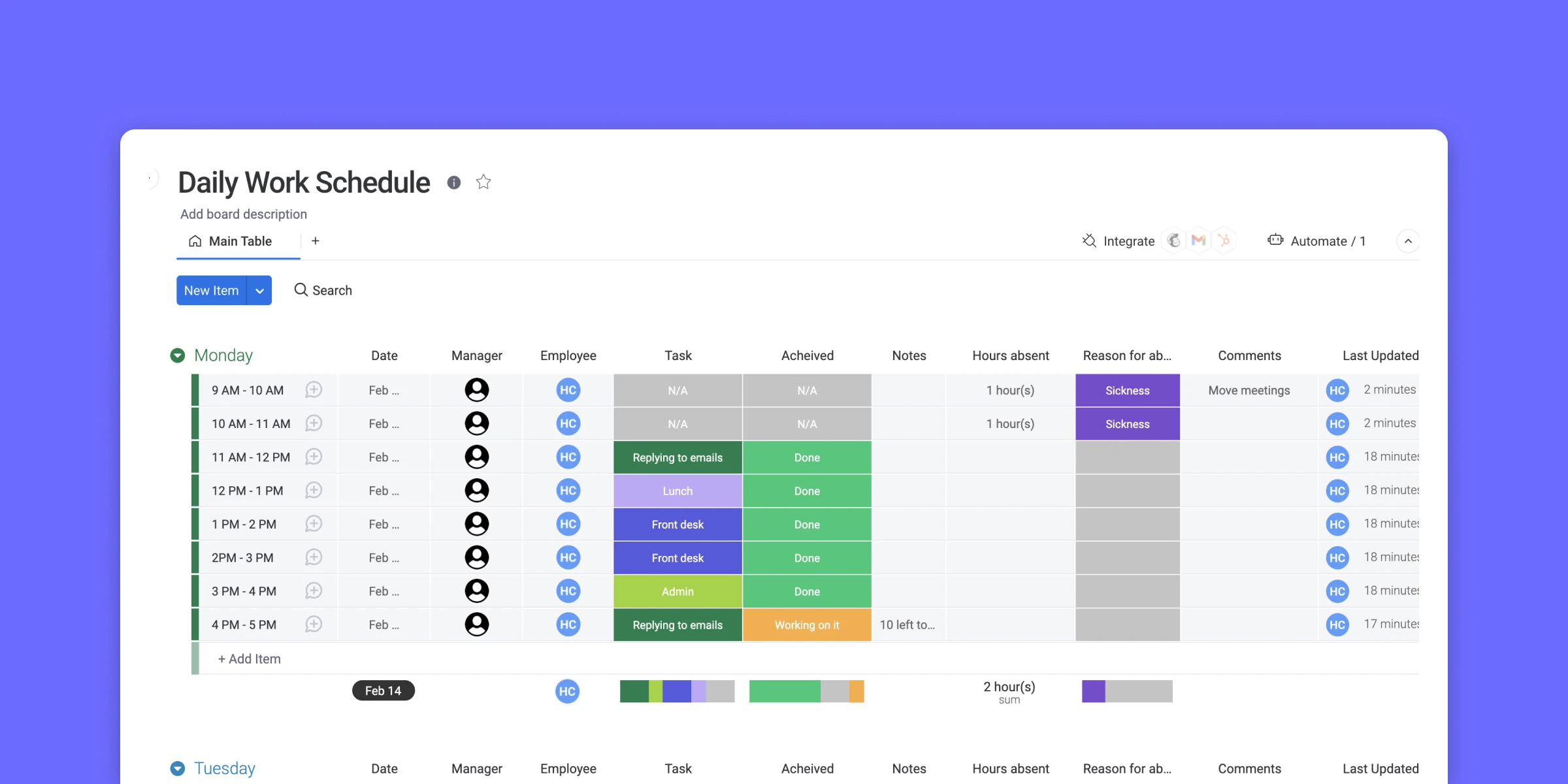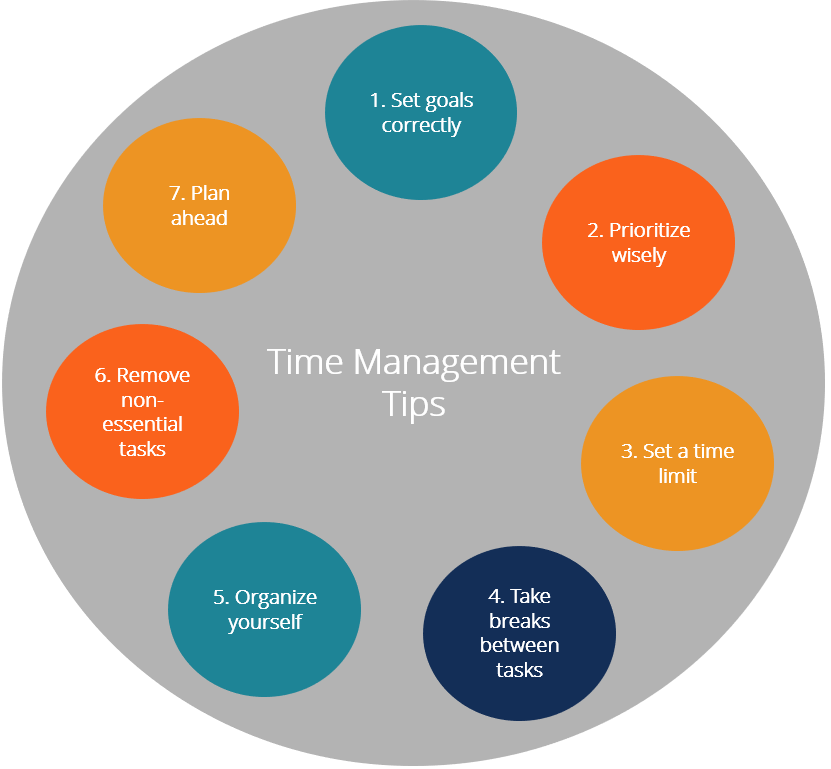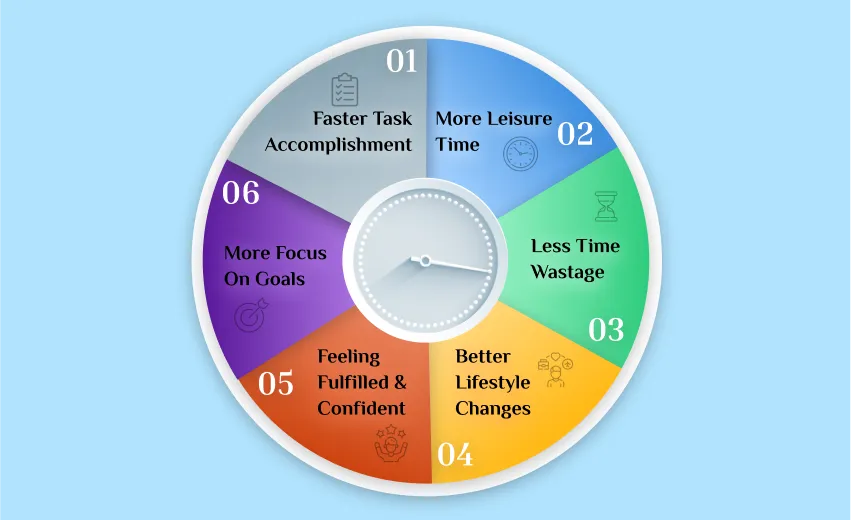In today’s fast-paced world, managing your time efficiently has become more important than ever. An organized work schedule can reduce stress, enhance productivity, and give you more time to focus on tasks that matter. Whether you’re a student, a freelancer, or someone working in a corporate environment, having a clear plan for how you spend your time can make all the difference.
This article will guide you through strategies and techniques to organize your work schedule effectively and stay on top of your tasks.
Why Organizing Your Work Schedule is Important
Before we dive into specific strategies, it’s essential to understand why organizing your work schedule is so important:
- Boosts Productivity: A clear schedule helps you focus on one task at a time, reducing distractions and procrastination.
- Reduces Stress: Knowing what needs to be done and when helps alleviate feelings of overwhelm and anxiety.
- Promotes Work-Life Balance: A well-organized schedule ensures you set aside time for work, personal activities, and rest.
- Improves Time Management: By allocating time for specific tasks, you make better use of your available time, leading to higher efficiency.
- Increases Focus: A structured schedule allows you to stay on track and reduces the temptation to multitask.
1. Set Clear Goals and Priorities
One of the first steps in organizing your work schedule is identifying what you need to accomplish. Setting clear goals and understanding your priorities will give you a better sense of direction and focus.
How to Set Clear Goals:
- Define your tasks: Break down your work into clear, actionable tasks. Instead of just saying “finish report,” break it into smaller tasks like “collect data,” “write introduction,” and “format conclusion.”
- Set SMART goals: Make your goals Specific, Measurable, Achievable, Relevant, and Time-bound. This ensures you know exactly what needs to be done and by when.
- Categorize tasks: Determine which tasks are urgent, important, or less critical. This will help you prioritize effectively and focus on what really matters.
Example:
If you have a project deadline in a week, your goals could include completing specific tasks like:
- Monday: Research and outline the project.
- Tuesday: Write the introduction and methods sections.
- Wednesday: Analyze data.
- Thursday: Write the results and conclusion.
- Friday: Review and finalize the document.
2. Use a Planner or Digital Tools
Whether you prefer traditional paper planners or digital tools, having a visual representation of your work schedule will help you stay organized. A planner can help you see your tasks for the day, week, and month at a glance, making it easier to manage your time effectively.
Traditional Planners:
A physical planner or notebook can be a great way to organize your schedule. Use color-coding, bullet points, or checkboxes to keep track of tasks. You can also incorporate weekly and monthly spreads to ensure you don’t miss any important deadlines.
Digital Tools:
There are many apps and tools available that help you organize your work schedule digitally. Some of the most popular ones include:
- Google Calendar: Ideal for scheduling meetings and setting reminders.
- Trello: Perfect for organizing tasks using boards, lists, and cards.
- Asana: A task management tool that allows you to create, assign, and track tasks.
- Todoist: A simple app for creating to-do lists and managing deadlines.
- Notion: A versatile tool that can be used for note-taking, task management, and project planning.
These tools can sync across multiple devices, ensuring you always have your schedule with you. Plus, they often offer features like reminders, deadlines, and notifications, which help you stay on track.
3. Time Blocking Technique
Time blocking is a powerful technique for organizing your work schedule. It involves dividing your day into blocks of time, each dedicated to a specific task or activity. This helps ensure you’re focusing on one task at a time, reducing the temptation to multitask and improving productivity.
How to Use Time Blocking:
- Break your day into chunks: Start by dividing your day into manageable chunks of time (e.g., 30-minute to 2-hour blocks).
- Assign specific tasks: Assign specific tasks or activities to each time block. For example, a block from 9 AM to 11 AM could be dedicated to writing, while 1 PM to 2 PM could be for meetings.
- Include breaks: Schedule short breaks between time blocks to refresh your mind and avoid burnout. For example, take a 10-minute break every hour or a 30-minute lunch break.
- Stick to the schedule: Once you’ve assigned tasks to specific time blocks, try to stick to the schedule as much as possible. Avoid distractions and use the time efficiently.
Example:
- 8:00 AM – 9:00 AM: Respond to emails.
- 9:00 AM – 11:00 AM: Focus on the project task (research).
- 11:00 AM – 12:00 PM: Review and reply to emails or messages.
- 12:00 PM – 1:00 PM: Lunch break.
- 1:00 PM – 3:00 PM: Work on writing tasks.
- 3:00 PM – 4:00 PM: Meeting or brainstorming session.
- 4:00 PM – 5:00 PM: Wrap up and plan for the next day.
4. Set Realistic Deadlines
While it’s important to stay productive, it’s equally crucial to set realistic deadlines. Overloading your schedule with too many tasks or setting impossible deadlines can lead to burnout and frustration.
How to Set Realistic Deadlines:
- Be mindful of your energy levels: Don’t schedule demanding tasks back-to-back. Allow for mental breaks and plan simpler tasks after intensive work.
- Underestimate time: Often, tasks take longer than expected. Factor in extra time for unexpected delays and interruptions.
- Avoid perfectionism: Set deadlines that focus on completing the task, not necessarily perfecting it. Perfectionism can delay your progress and cause unnecessary stress.
5. Prioritize Self-Care
An organized work schedule is important, but so is maintaining your health and well-being. Incorporating self-care into your schedule can help you stay motivated and prevent burnout.
How to Include Self-Care in Your Schedule:
- Schedule breaks: Take short, regular breaks to recharge. Stand up, stretch, or take a walk to clear your mind.
- Prioritize sleep: Make sure you’re getting enough rest. Avoid overloading your schedule and ensure that you have enough time for a good night’s sleep.
- Exercise regularly: Physical activity is essential for mental clarity and reducing stress. Add a workout session to your schedule each day, even if it’s just for 20–30 minutes.
6. Review and Adjust Your Schedule Regularly
Life can be unpredictable, and sometimes things don’t go as planned. Make it a habit to review and adjust your work schedule regularly to ensure it remains effective.
How to Review Your Schedule:
- End-of-day review: At the end of each day, review what you accomplished and what needs to be adjusted for the following day.
- Weekly planning: Take time at the end of each week to assess your overall progress. Look ahead to the upcoming week and adjust your schedule based on new tasks or changes in priority.
Conclusion
Organizing your work schedule is not a one-size-fits-all process. By using the strategies outlined above, you can create a schedule that works best for you, enhances your productivity, and promotes a better work-life balance. Whether you’re using traditional planners or digital tools, time blocking, setting realistic goals, or prioritizing self-care, the key to a successful work schedule is consistency and flexibility.
Would you like an image to accompany this article? Perhaps a visual of a well-organized desk or someone working on a digital tool to manage their schedule?




